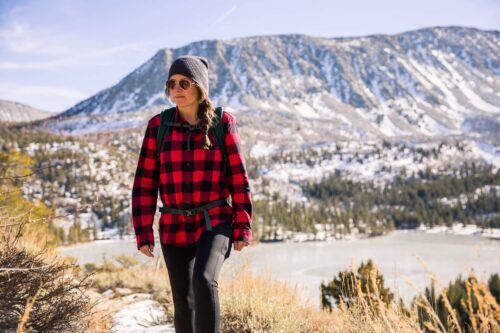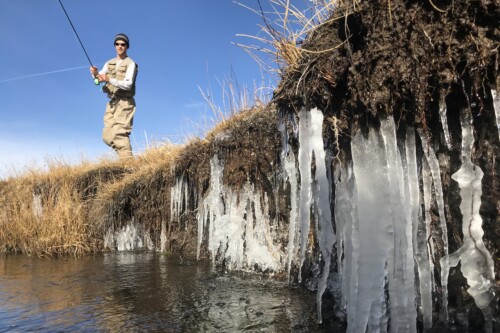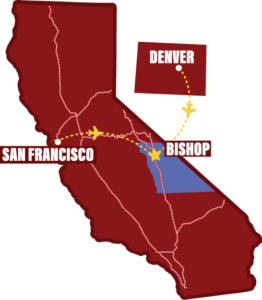Matching the Hatch
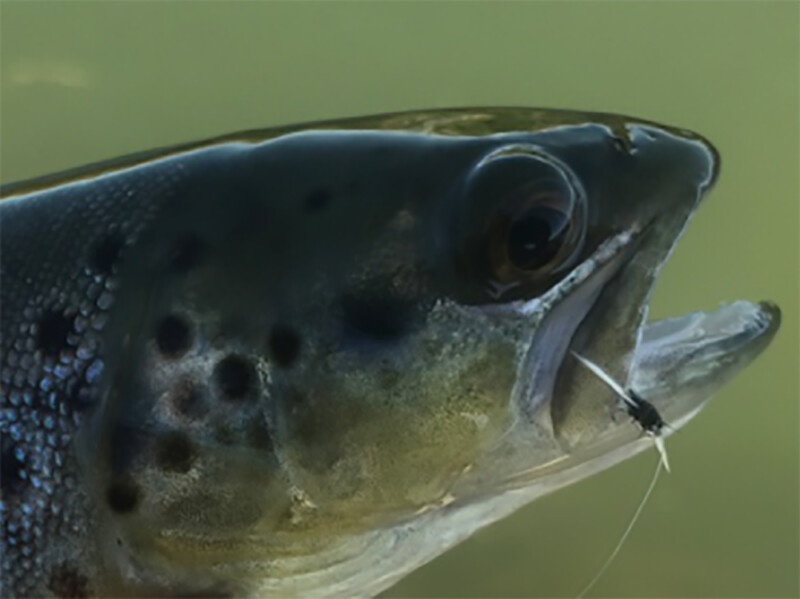
Matching the Hatch
by Fred Rowe, Sierra Bright Dot
It’s both the holy grail of fly fishing and it’s a two-part solution. First, you need to know what the fish is feeding on. Second, you need to have an imitation of the insect that is perfect.
Hatches are seasonal and looked forward to with much anticipation by fly fishers. Here in the Eastern Sierra blue wing olives (BWO) are the first hatch of the season starting in early February. That hatch is followed by caddis, pale morning duns (PMD), little yellow stones, callibaetis, and summer hopper hatches. In the fall fly fishers look for the October caddis, the biggest caddis in the Sierra, and tricorythodes mayflies (Tricos), the smallest mayfly in the Sierra.
Once you have identified the hatch you need an imitation that is a perfect match of the insect. The fly pattern needs to incorporate the size, shape and color of the natural, and needs to be fished the way the insect behaves. Some patterns can be bought off the shelf but other patterns can only be duplicated by tying your own flies.
I got into the fly-fishing industry as a fly tier. I’ve gotten good at tying exact imitations of other fly fishers fly patterns and imitating the insects found in the waters of the Eastern Sierra. I’ve also fished the major hatches in the Sierra with reliable success. I’ve never seen the October caddis hatch in big enough numbers to have the trout feed selectively on them. I’ve fished the Trico hatch a few times with mixed results. Recently I was tapped for my fly tying skills by a local fly fisher as he was looking for someone to tie a fly pattern that was not available at any of the Eastern Sierra tackle stores.
He had me look at some insects from a stomach pump sample and I recognized them instantly as Trico spinners. I told him I could tie up an imitation if I had a small enough hook. I figured that the natural was a size 28 or 30. The smallest dry fly hook I have is a size 24. There might be a smaller hook, but a size 24 is small.
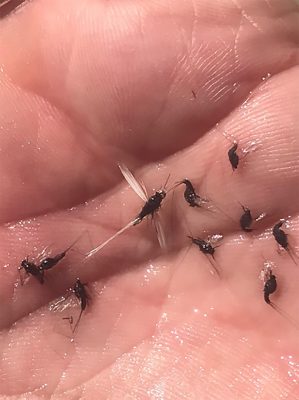
As you can see in the photo, a size 24 Trico spinner fly tucked in with the naturals from a stomach sample shows that the fly pattern is bigger than the naturals.
I tied up some Trico spinners on the size 24 hooks and took them to the water to test them out. I attached a three-foot section of 6X tippet to my leader and tied a spinner on with a turle knot. I watched several trout rise to insects on the water that were so small I could not see them. I cast over the fish with the confidence that I had the right fly. Cast after cast and the trout were not interested in my fly pattern. Several trout rose to the fly but would not take it off the surface.
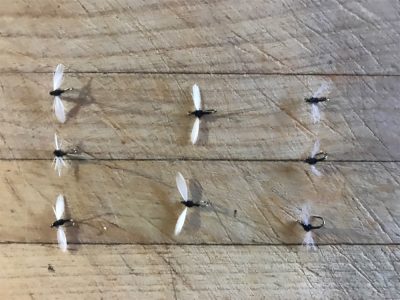
I tried a Hot Creek trick I knew about getting a drag free drift. I cast the fly such that it landed in a puddle of tippet. This allowed the fly to naturally drift down stream. This resulted in several hits and a couple of eight to ten-inch brown trout being fooled. A stomach sample from the brown showed that the naturals were a couple of sizes smaller than my pattern.
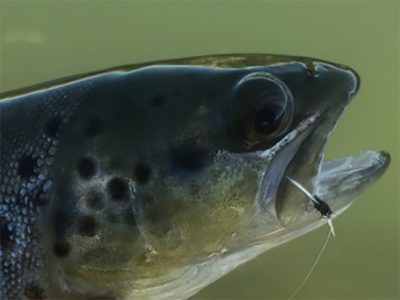
My pattern was close, but it was not perfect so I’m back to the fly-tying table to try and come up with a pattern that is a perfect match. I tied up a few spinners on a scud hook, smallest hook I own, to see if I could get the size right and I need to take them to the water to give them a try.
I only got half of the formula for matching the hatch correct. My insect identifying skills were correct. My fly pattern is correct in shape and color. Size is off by 40 to 60% and is responsible for the fly not being the right fly.
This is the joy of being a fly fisher – fly tier in the Eastern Sierra. I will continue to return to the water until I can get the formula correct. When I do every trout in the creek will rise to take my Trico spinner off the surface.
Written by:
Vickie Taton
Since taking a chance summer job in 1980, I've lived in and loved the eastern Sierra. Sometimes home is a place you've never been before, and that is how I felt driving north into Inyo and Mono Counties so many years ago. It really doesn't matter the activity; fishing, hiking, skiing, riding my horse or mountain biking, I love the clean air, the cobalt blue sky, the constantly changing weather. Welcome! I'm happy to share a little piece of this place with you.
